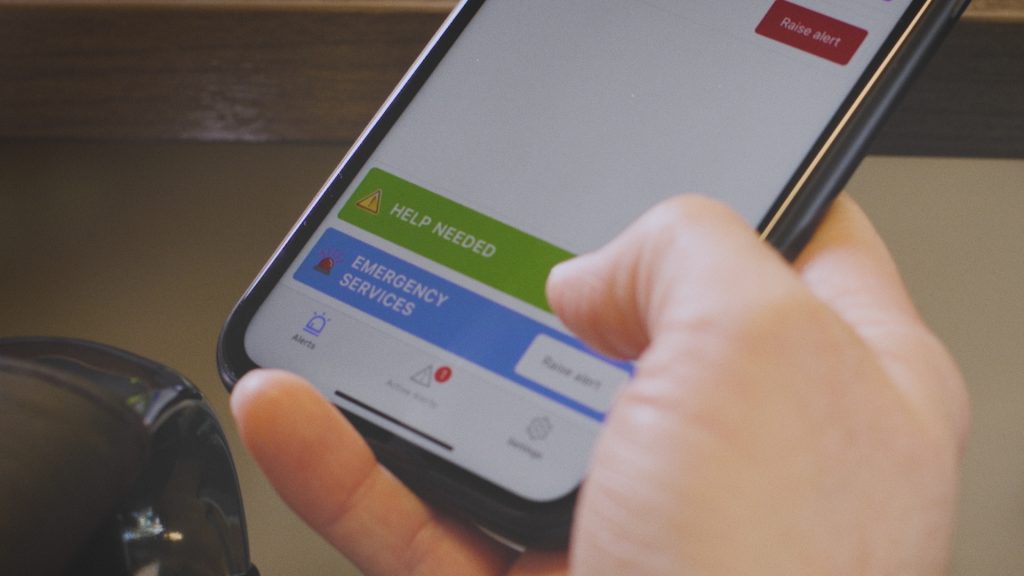Beyond De-escalation Training: Why the Best Workplace Safety Programs Include Technology

Company training encompasses several aspects of the job including your responsibilities, relationships with other team members, the company’s mission statement, and the overall culture. But a key part of training can often be missing or simplified to a page or two in the handbook. What are employees supposed to do when a violent incident or conflict happens at work?
As our last blog post discussed, 85% of employees experience workplace conflict, and without proper de-escalation training and planning, tense interactions can get out of hand quickly.
– A coworker could get heated after being reprimanded or after losing out on a promotion.
– A team could find themselves fighting over responsibilities in a project.
– A boss could find themselves dealing with an angry team member who had just been fired.
No matter what the scenario is, diffusion is necessary. And three in ten employees say they deal with conflict “always” (CPP Global).
The key question is how to head off the incident before it becomes unmanageable. Not all scenarios need HR coming in to save the day.
What Is De-Escalation Training, And Does It Even Work?
De-escalation training focuses on several tactics for workplace violence prevention such as practicing situational awareness, providing empathy, staying calm, actively listening, and finding common ground. These skills provide a decent base for situation diffusion in a workplace setting. If they are able to properly respond to the incidents, employees can work to try and create a more peaceful environment as opposed to something more intense.
But that is a big “if.” Why?
– De-escalation skills rely on human application during high-stress situations.
– Adrenaline and fear could take over even if they have been properly trained.
– A person could freeze, panic, or misjudge what is happening in the moment.
Is De-Escalation Enough?
RAND reveals that the answer is no, especially when used in isolation. In fact, employees prefer a multimodal approach, showing that they want a different set of tools that can make them feel empowered in these situations. In a people-first culture, employers owe it to their team to provide the highest degree of employee safety.
The Addition of Workplace Safety Technology
According to the National Safety Council, 65% of employers have researched workplace safety technologies with 83% of employees believing that these technologies could improve workplace safety. Workplace violence prevention programs have started to include tools like:
– Panic button systems for instant alerts
– Real-time communication platforms that can perform live incident updates
– CCTV and access control for perimeter monitoring
– Geolocators for finding mobile workers
– Sound analytics that can detect gunshots or aggressive speech
Implementing De-Escalation Tools
Panic button systems allow for a variety of uses in fragmented or high-risk environments.
With a panic button system, an employee can:
– Trigger the alarm silently from their desktop, phone, or wearable device
– Notify their team immediately of any incidents that are occurring
– Implement two-way communication to provide updates during a crisis
– Provide team members with proper guidance

An Enhancement, Not A Replacement
Before you start rethinking your de-escalation training, remember that these tools are not replacements, but enhancements. Employees still need to have their skillset, but these technologies are a vital aid when the time comes. By utilizing such a combination of human and artificial intelligence, response times can be increased, and coordination can be improved between all parties.
Just like you did for your regular de-escalation training, using these tools requires a fair amount of employee buy-in. When implementing the new technology, help your team understand that you are wanting to protect their well-being, empower them in stressful situations, and create a better employee safety culture. And remember that technology rewards those who are willing to evolve, so be sure to keep moving forward.
Find out about all the technology that exists beyond de-escalation training by speaking to us at TeamAlert!

